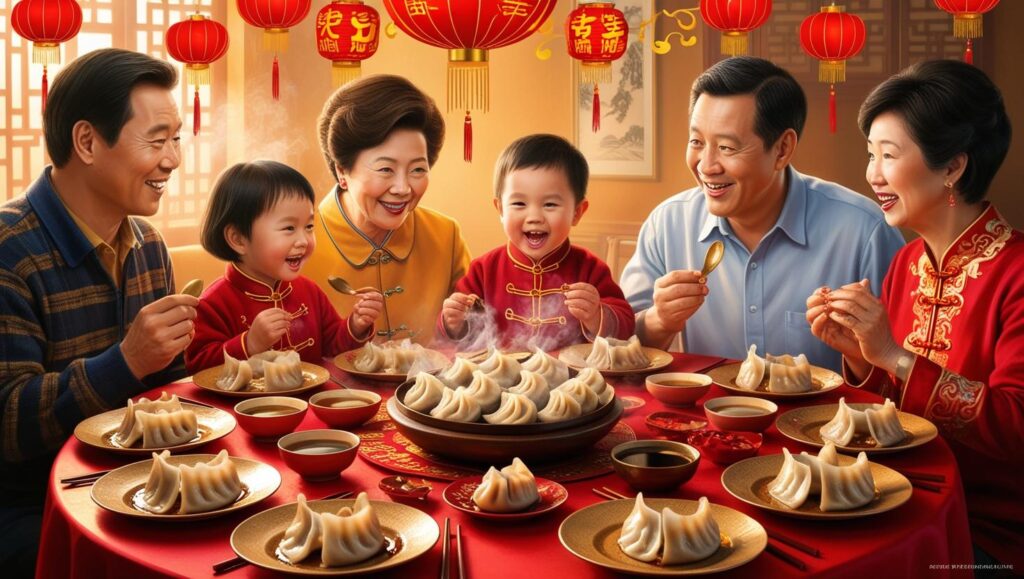January 29th is Chinese New Year.
The date of Chinese New Year changes every year because it is based on the New Year of the lunar calendar (lunisolar calendar).
Chinese New Year is celebrated with great fanfare not only in China, but also in Taiwan, Hong Kong, South Korea, Singapore and Malaysia.
Red is the colour that symbolises good fortune, and red lanterns and decorations are commonly used during Chinese New Year.
The origin of the festival is a legend that says that people used the color red and firecrackers to ward off a monster called “Nian” from attacking their village.
Couplets written in gold and black are also posted at entranceways and on walls.
For China, the 2025 Spring Festival will be the first year that the country has been listed as an intangible cultural heritage by UNESCO.
If I meet a Chinese person, I will say to them, “Congratulations on being registered as an Intangible Cultural Heritage by UNESCO!”
The image is a photo of a Chinese family eating dumplings during Chinese New Year, created by Jowa using a generated AI.
1月29日は春節(旧正月)です。
春節は毎年の日付が変わります。旧暦(太陰太陽暦)の正月が基準だからです。
春節は中国だけでなく、台湾・香港・韓国・シンガポール・マレーシアでも盛大に祝われています。
赤は幸運を象徴する色で、春節には赤い提灯や飾りが多く使われます。
「年獣(ニエン)」という怪物が村を襲うのを防ぐために、人々が赤い色や爆竹を使ったという伝説が由来です。
また金や黒で書いた対句が玄関や壁に貼られます。
中国にとって、2025年の春節はユネスコの無形文化遺産に登録された初めての年です。
中国人に会ったら、「ユネスコの無形文化遺産登録おめでとう!」と声をかけようと思います。
画像は城和が生成AIで作成した「春節に中国人の家族が餃子を食べている写真」です。

